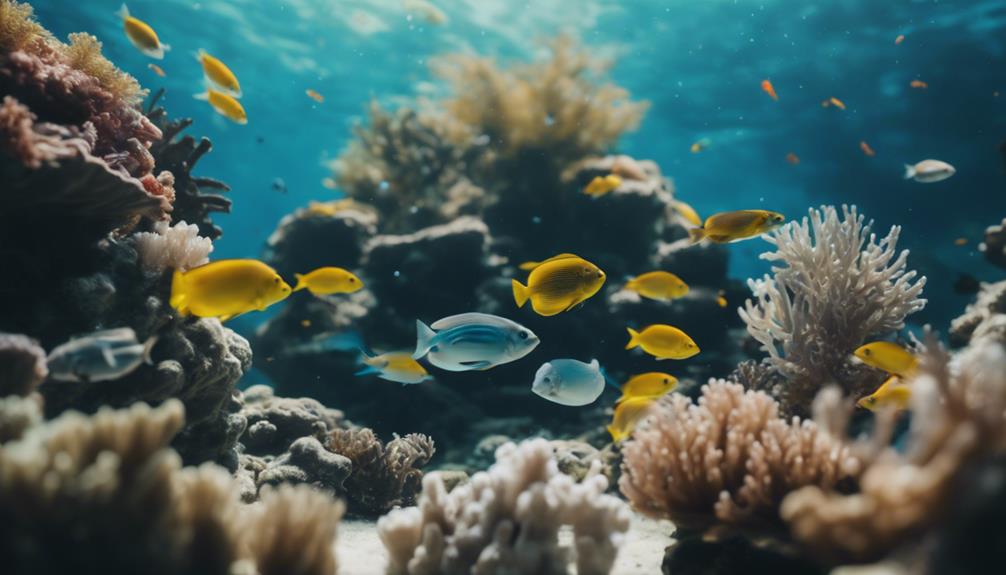Understanding the Concept of a Flying Fish Fleet
When we talk about the flying fish fleet, we’re not merely referring to a gathering of these unique aquatic creatures but rather a fascinating phenomenon that occurs in various global waters. Flying fish, belonging to the family Exocoetidae, are known for their extraordinary ability to glide above the surface of the ocean. This fleet of fish can often be spotted in warm waters, where they leap out of the water to escape predators. They can glide for considerable distances, with some species capable of covering up to 200 meters in a single leap. This remarkable adaptation helps them evade threats and has made them a subject of interest among marine biologists and enthusiasts alike.
The Biology Behind Flying Fish
To truly appreciate the flying fish fleet, it’s essential to understand the biology behind these fascinating fish. Flying fish possess specialized adaptations that allow them to glide gracefully through the air. Their streamlined bodies and large, wing-like pectoral fins enable them to take off from the water’s surface. When fleeing from predators, flying fish can reach speeds of up to 60 km/h (37 mph), propelling themselves out of the water and spreading their fins to catch the air. This unique gliding ability not only aids in avoiding predation but also allows them to cover considerable distances, making the flying fish fleet an awe-inspiring sight for anyone fortunate enough to witness it.
Habitat and Distribution of Flying Fish Fleets
The habitat of the flying fish fleet primarily consists of warm, tropical, and subtropical oceanic waters. They are commonly found in regions such as the Caribbean Sea, the Gulf of Mexico, and the Atlantic and Pacific Oceans. The abundance of food sources, such as plankton and small fish, in these waters supports large schools of flying fish. In certain areas, these schools can be quite vast, creating a breathtaking spectacle as they take to the air in unison. Understanding the distribution and habitat of flying fish is crucial for marine conservation efforts, as these environments play a vital role in sustaining their populations.
The Role of Flying Fish in Marine Ecosystems
Flying fish play a significant role in their ecosystems. They serve as a vital source of food for various marine predators, including birds, larger fish, and even some mammals. The flying fish fleet contributes to the marine food web, providing nourishment to numerous species. Additionally, their presence indicates a healthy marine environment, as they thrive in waters rich in nutrients. By studying these fleets, scientists can gain insights into the health of the ocean and the impact of climate change on marine biodiversity.
Human Interaction with Flying Fish Fleets
Human interaction with flying fish fleets is multifaceted, encompassing aspects of fishing, tourism, and conservation. In many cultures, flying fish are considered a delicacy, and commercial fishing practices have emerged to target these species. However, overfishing can pose a threat to their populations, making sustainable fishing practices essential. Moreover, eco-tourism initiatives focusing on observing flying fish fleets can provide economic benefits while promoting conservation efforts. By raising awareness of the importance of flying fish and their habitats, we can foster a greater appreciation for marine ecosystems.
Conservation Efforts for Flying Fish
As with many marine species, flying fish face threats from habitat degradation, pollution, and climate change. Conservation efforts are crucial to ensuring the survival of flying fish fleets. Various organizations are working to protect their habitats and promote sustainable fishing practices. Initiatives such as marine protected areas (MPAs) help safeguard the environments where these fish thrive. Education and awareness campaigns also play a significant role in engaging local communities and fostering a sense of responsibility towards marine conservation. By understanding the ecological importance of flying fish, we can take action to protect these remarkable creatures.
The Cultural Significance of Flying Fish
Throughout history, flying fish have held cultural significance in various societies. In many coastal communities, they are featured in folklore, art, and even cuisine. For instance, in some Caribbean cultures, flying fish festivals celebrate the abundance of these fish and their importance to local economies. Additionally, their unique gliding ability has inspired stories and myths, further embedding them in the cultural fabric of maritime societies. Understanding the cultural significance of flying fish fleets can enrich our appreciation of these remarkable creatures and highlight the interconnectedness of human and marine life.
Future of the Flying Fish Fleet
The future of the flying fish fleet hinges on our collective efforts to protect marine environments. As climate change continues to impact ocean temperatures and ecosystems, it is crucial to monitor flying fish populations and their habitats. Ongoing research and conservation initiatives will play a pivotal role in ensuring the survival of these extraordinary fish. By promoting sustainable practices and fostering a deeper understanding of marine ecosystems, we can help secure a future for the flying fish fleet and the myriad of life it supports. Engaging with local communities and encouraging responsible tourism can further enhance conservation efforts, ensuring that these remarkable fish continue to thrive in our oceans.
In conclusion, the flying fish fleet is not just a spectacle of nature; it is a vital component of marine ecosystems, a cultural touchstone, and a subject of ongoing scientific interest. By understanding and appreciating these incredible creatures, we can take meaningful steps towards their conservation and the protection of our oceans. Whether you’re a marine enthusiast, a fisherman, or simply someone who enjoys the beauty of the sea, the flying fish fleet offers a glimpse into the wonders of the ocean that should not be overlooked.
